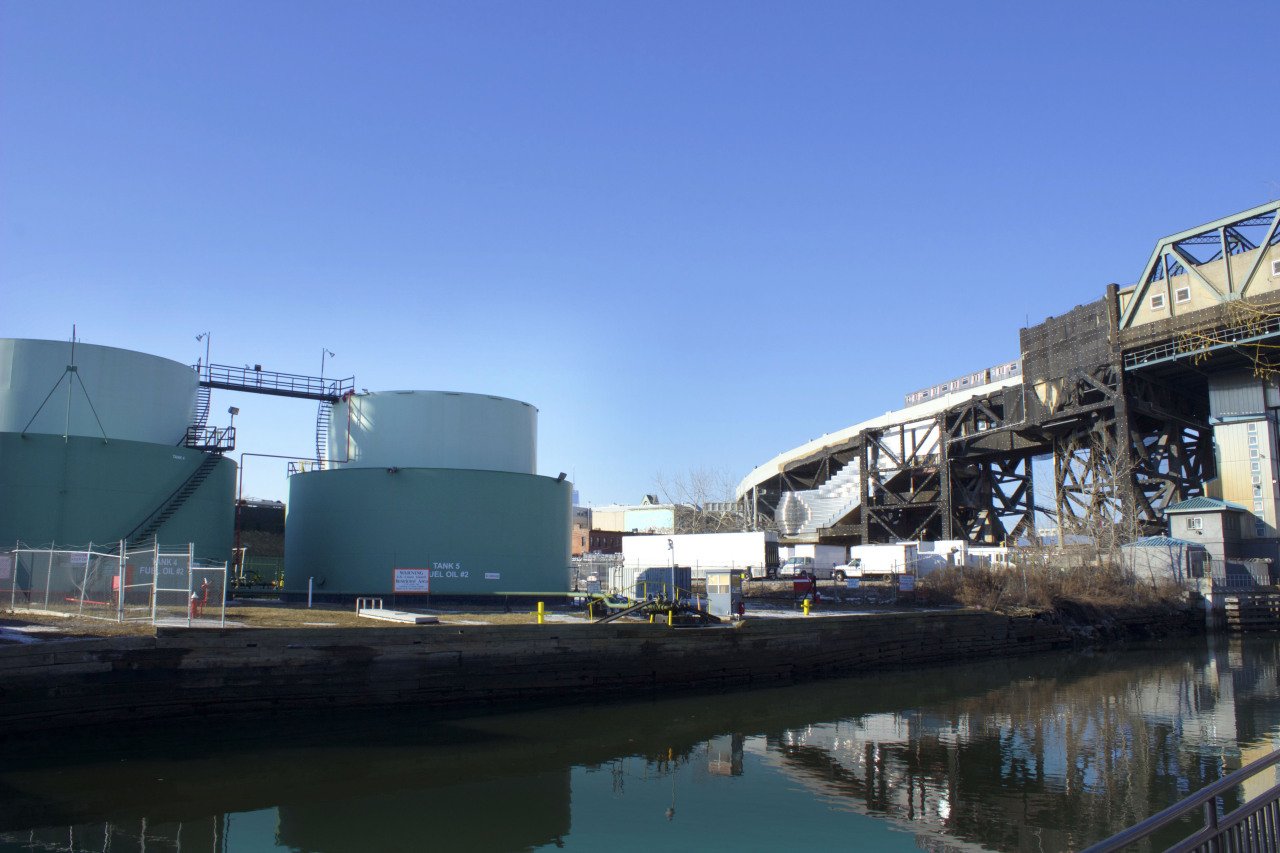A Journey Through Superfunds
By Bryce Dzialo
July 30, 2016
“EPA’s superfund program is responsible for cleaning up some of the nation’s most contaminated land and responding to environmental emergencies, oil spills and natural disasters.” - Environmental Protection Agency
In March 2015, I photographed four superfund sites located in the outer boroughs of New York City. This project took me on a journey through a piece of New York’s environmental history.
Newtown Creek, facing west on 49th street in Brooklyn’s Greenpoint neighborhood. In the 1800’s, Newtown Creek and its surroundings served as one of the most productive ports and industrial areas in the city. Years of contamination and spills have turned the creek into one of the most polluted waterways in the United States.
South of Greenpoint, this crane truck fleet mirrors the Manhattan skyline to the west. Today Newtown Creek is surrounded by factories, waste management facilities, trucking and construction ports, and petroleum storage.
A baseball game being played in Red Hook, Brooklyn. In 2014, the Environmental Protection Agency investigated the site of where the Columbia Smelting and Refining Works facility previously stood. The facility was torn down in 1940 and replaced by baseball fields. In its investigation, the EPA found high levels of lead in three of the fields.
The Gowanus Canal, less than two miles from Red Hook Park. The canal is visibly green on sunny days like this, and is lined with the same types of structures and facilities as the Newtown Creek. The EPA found heavy metal contaminants, PCB’s, and coal tar in the canal, declaring it a superfund site in 2010.
The Radium Chemical Company site in Queens, New York. From the 1950’s to the early 1980’s, Radium Chemical distributed radium to nearby hospitals for cancer treatments. After the building was abandoned, the EPA worked for years to clean up the site, removing medical devices lined with large quantities of radium.
New York City’s history as an industrial capital includes many more stories of environmental neglect. A result of ignorance, sites like these continue to leave difficult decisions for policy makers and officials. The locations listed above are all within fifteen miles of each other, and can certainly cause more problems if they are not monitored and carefully managed. With new technology and awareness about urban environmental issues, we may hopefully look forward to safer and cleaner cites for all.




